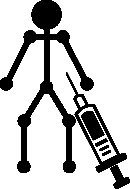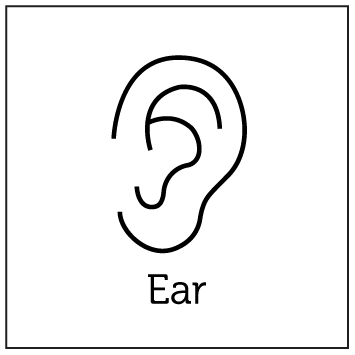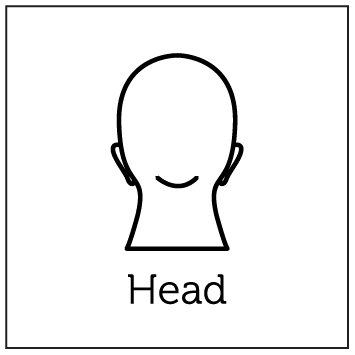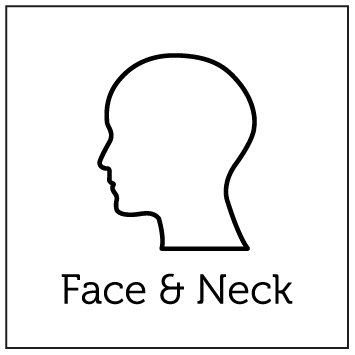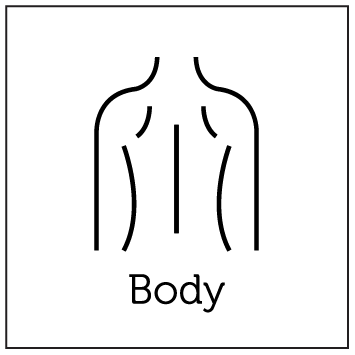Keloid & Hypertrophic Scar Treatment London
Keloids and hypertrophic scars can be extremely distressing for those who suffer with them. They are often extremely difficult to treat and can be the source of embarrassment especially if they are in easily visible areas. At Rejuvence we do not claim to have a magic cure for keloids and hypertrophic scars but we do offer a range of keloids scar treatments in London that can help.
What are keloids?
Hypertrophic and keloid scars develop as a result of an overgrowth of collagen over cuts and wounds. Keloids can develop from acne or chicken pox scars. They can also develop following procedures such as general & cosmetic surgery, piercings, and even after shaving. Keloids can also occur after treatments such as aggressive lasers or deep chemical peels. Hypertrophic scars are raised scars that remain within the boundaries of the original skin break. Keloids are defined as raised scars that extend beyond the borders of the original cut or wound. They can grow to significant size and can also be associated with itching, pain and recurrent infection.

Where do keloids normally occur?
Keloids can occur anywhere on the body. Keloids resulting from acne typically develop on the face, neck, chest, shoulders and back. Chicken pox and vaccination scars that develop into keloids typically occur on the shoulders. Keloids developing on the back of the scalp, beard region and pubic areas such as bikini region are normally associated with ingrown hairs following shaving. Specific cosmetic surgical procedures such as breast reductions, tummy tucks and liposuction can result in keloid scars. Piercings can also trigger keloid formation, notably on the ears, chest and belly button. The location of the keloid greatly influences treatment protocols.
Who are most likely to develop keloids?
Keloid scars are more common in darker skin types (IV – VI) and especially amongst those of Asian, South Asian and Afro-Carribean descent. These patients tend to have a genetic predisposition to keloids. However, keloid scarring is not exclusive to these groups of patients. Keloid scars can occur in any ethnicity. They are more likely to develop where there is chronic infection, delayed healing of cuts and wounds and on specific parts of the body such as infected ear piercings. Appreciation of differences in skin type between the different ethnicities is extremely important when it comes to planning treatment protocols.
Where is your Keloid?
What treatment options are available for keloid scars?
Treatment options for keloid scars can be categorised into non-surgical and surgical. The choice of keloid treatment is often dependent upon the anatomical location, cause, ethnic background and the success and/or failure of any previous treatments. Non-surgical treatments are delivered intralesionally (injections directly into the scar) or on the surface. Non-surgical treatment options consist of intralesional steroid injections, chemotherapy (5-FU), wrinkle relaxing toxins, YAG Laser and surface or intralesional cryotherapy. Surgical treatments consist of shave excision, elliptical excision and core excisions. Adjuvant treatments that help to prevent recurrence following definitive treatment include the use of silicone gel massage, silicone strips, steroid strips, compression garments, compression earrings and even radiotherapy. Behavioural changes are also needed alongside excellent compliance with treatment recommendations. Combinations of different treatments tend to work better than single stand alone approaches. In addition, an appreciation of ethnic background is essential as there are significant differences in response to treatment amongst different ethnicities. Above all the aim of treatment is most important. Often itching, increased sensitivity and even pain can be more debilitating than the physical appearance of a keloid scar.

Flexible payment options for surgical treatment – 0% APR available. Spread the cost of your treatment today!
Terms and Conditions apply. *Acceptance subject to credit status.

Flexible payment options for surgical treatment – 0% APR available. Spread the cost of your treatment today!
Terms and Conditions apply. *Acceptance subject to credit status.
Keloid Scar Treatment at Rejuvence Clinic

At Rejuvence we have experience in treating clients who suffer with troublesome keloids. We are able to provide a course of steroid injections in combination with YAG laser. We are also able to carry out surgical excision of the keloids and recommend a combination of steroid injections afterwards along side compression bandaging (depending upon where the keloids are) and silicone gel and strips. We advocate the use of steroid strips in certain ethnic backgrounds for colour matching. We are also very experienced in dealing with the complications of treatment such as skin atrophy, hypopigmentation and keloid recurrence following surgery. We have had excellent results but always advise our clients that there is a high risk of recurrence. Realistic expectations are paramount and acceptance that we cannot make your keloids disappear is needed.
Book a consultation to find out more.


Flexible payment options for surgical treatment – 0% APR available. Spread the cost of your treatment today!
Terms and Conditions apply. *Acceptance subject to credit status.

Flexible payment options for surgical treatment – 0% APR available. Spread the cost of your treatment today!
Terms and Conditions apply. *Acceptance subject to credit status.
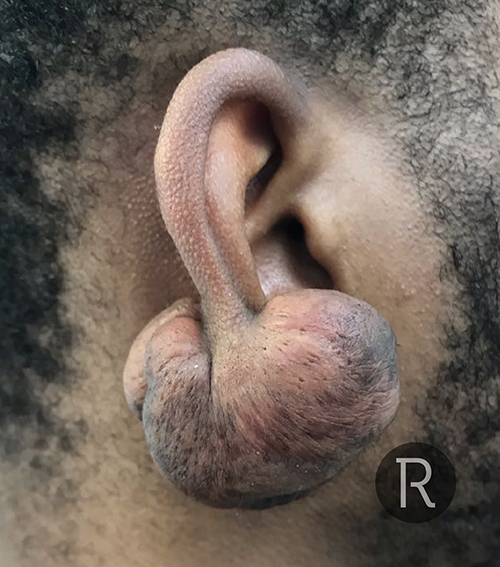
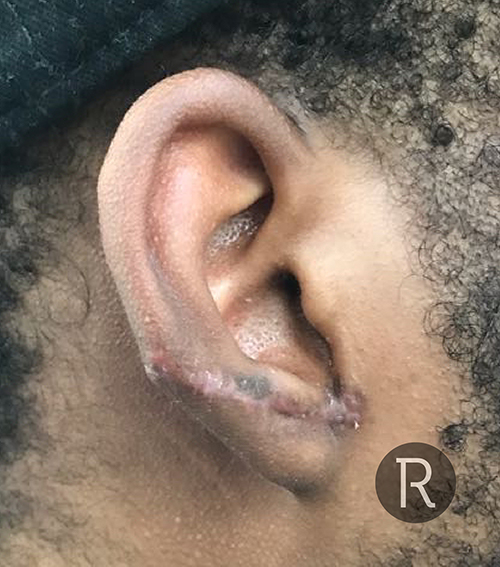
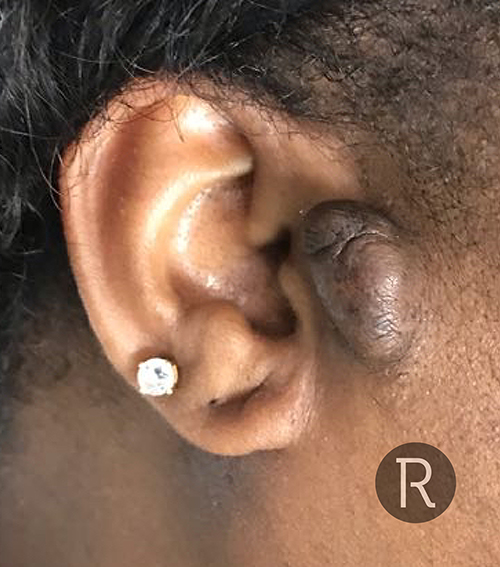
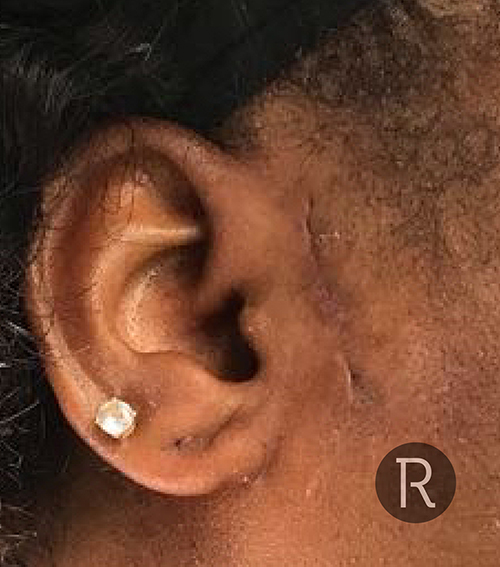
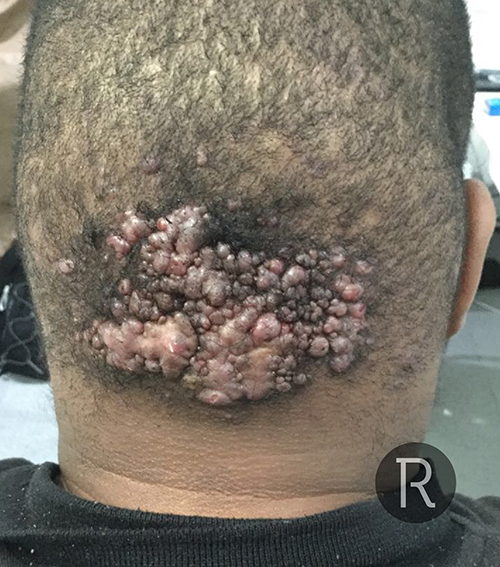
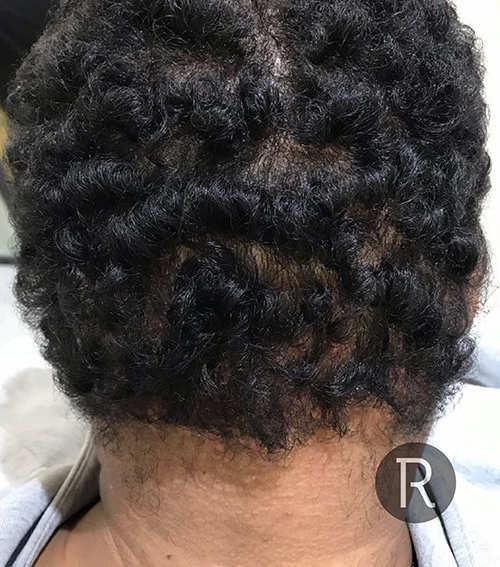
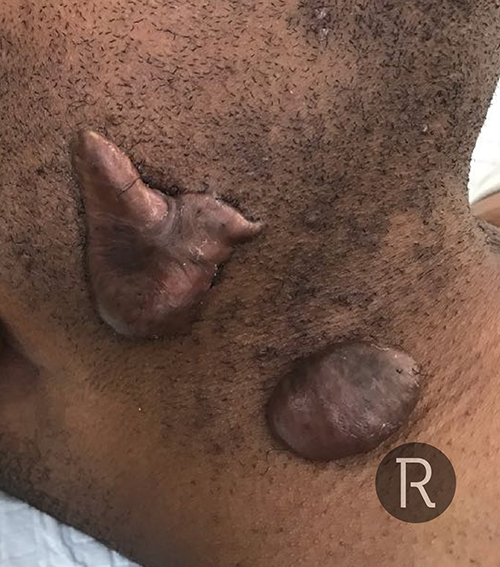
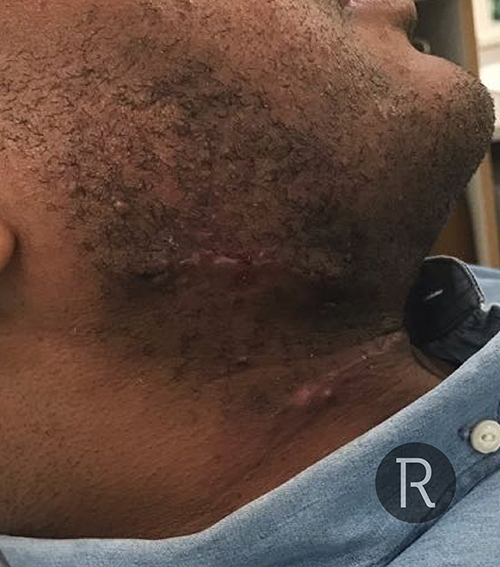
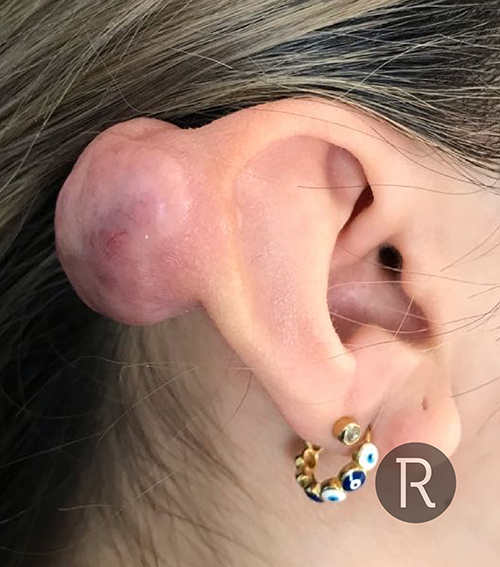
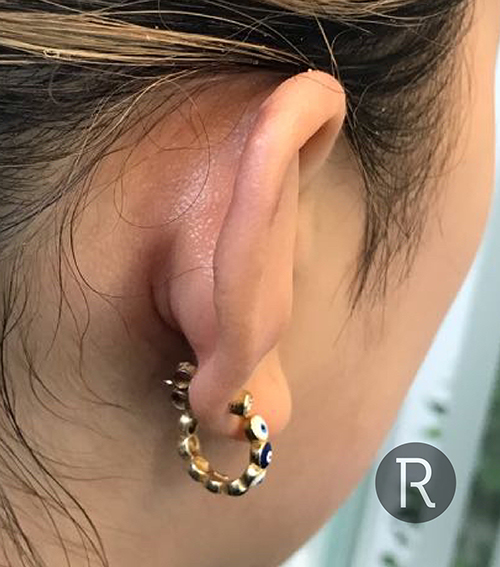
©Individual results may vary.
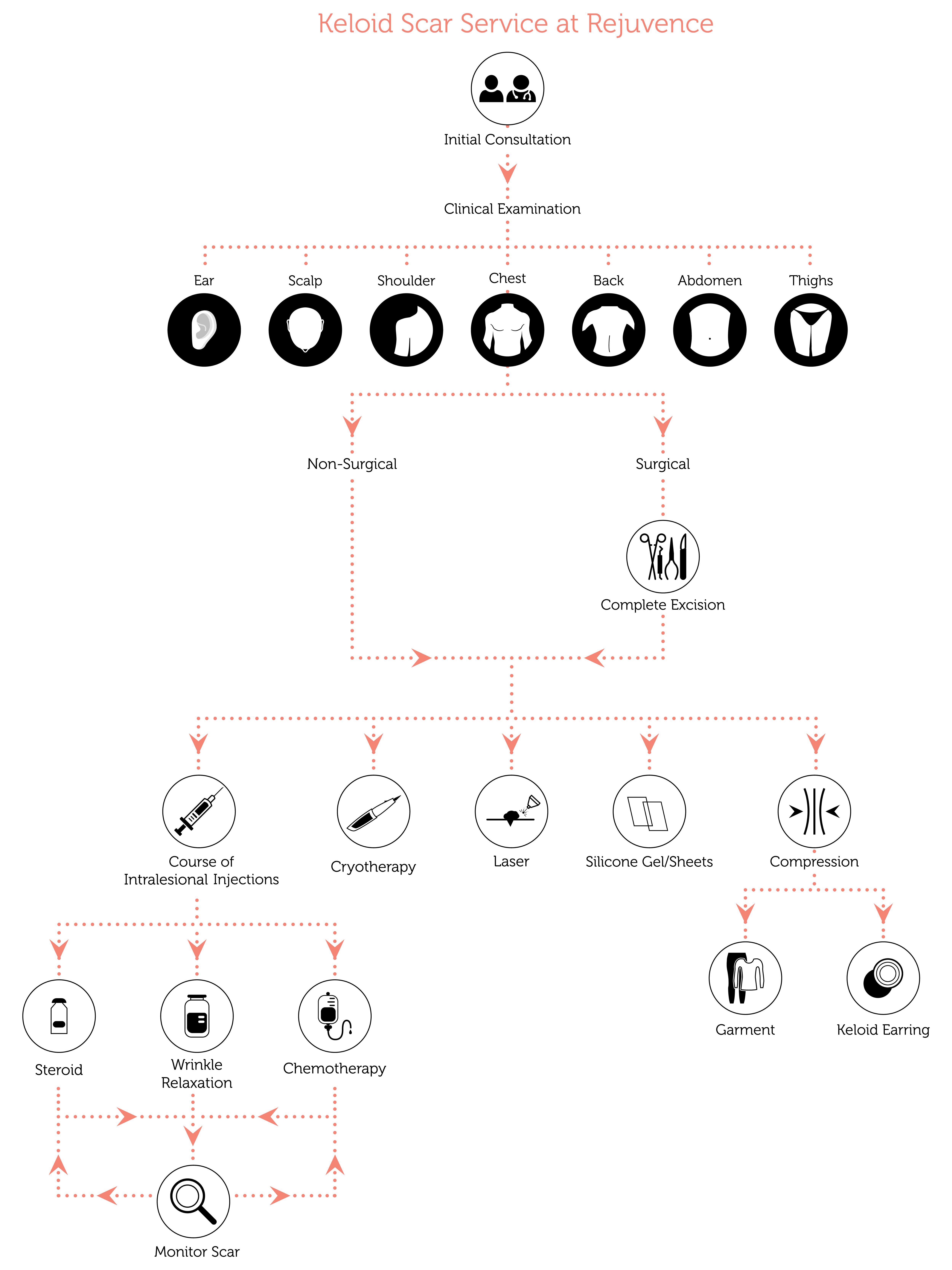
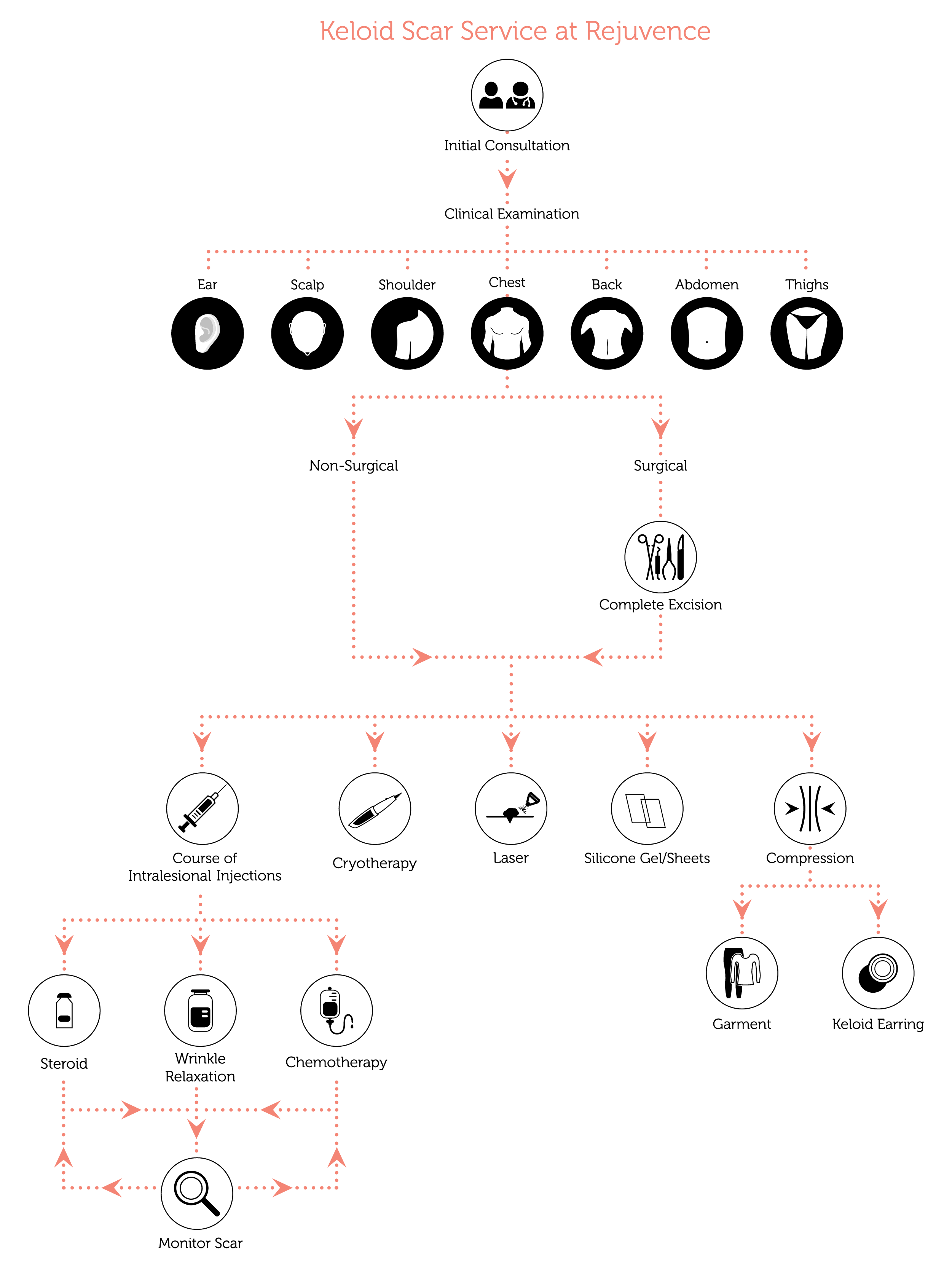
Intralesional steroid injections for keloid scars?
Injection of steroid into keloid scars, also known as intralesional steroid injections, has been shown to produce positive results and is considered to be first line treatment.
After a series of repeated treatments over the course of a few months, steroids can help to shrink keloid scars. Steroids can also help with other symptoms associated with keloids including itching and to some extent pain.
Side effects associated with steroid treatment include lightening of the skin over the keloid (also known as hypopigmentation) and thinning of the skin (atrophy). Hypopigmentation is normally temporary and can be reversed with application of a specific ointment. When combined with YAG laser treatment there tends to be a reduced incidence of hypopigmentation. Thinning of the skin (also known as atrophy) can result in ‘pitting’ or ‘dipping’ of scars. Correct dosing of steroid injections is vital as well as an appreciation for the ethnic background of the patient and their skin type. Darker skin types such as Afro-Carribeans tend to require much higher doses of steroid than lighter skin types such as Mediterranean ethnicities. The steroid injections themselves can be sore. It is often necessary to add in some local anaesthetic with the steroids and use topical anaesthetic creams prior to treatment.
Can YAG Laser help improve keloid scars?
Laser treatment in the form of YAG laser has been found to be very effective in the treatment of hypertrophic and keloid scars especially in Skin Types I-IV. YAG laser targets the superficial blood vessels in scars and can help to improve the colour of keloids especially where they appear very red and inflamed. YAG laser also results in the transfer of heat to the deep dermis (deep layer of the skin) and breakdown of the scar followed by new and more organised collagen regrowth improving hypertrophic and keloid scars. YAG laser in combination with intralesional steroid and chemotherapy (5-FU) treatment has been shown to demonstrate excellent cosmetic improvement in the appearance of keloids. For further information on laser treatment options for hypertrophic and keloid scars at Rejuvence click here.
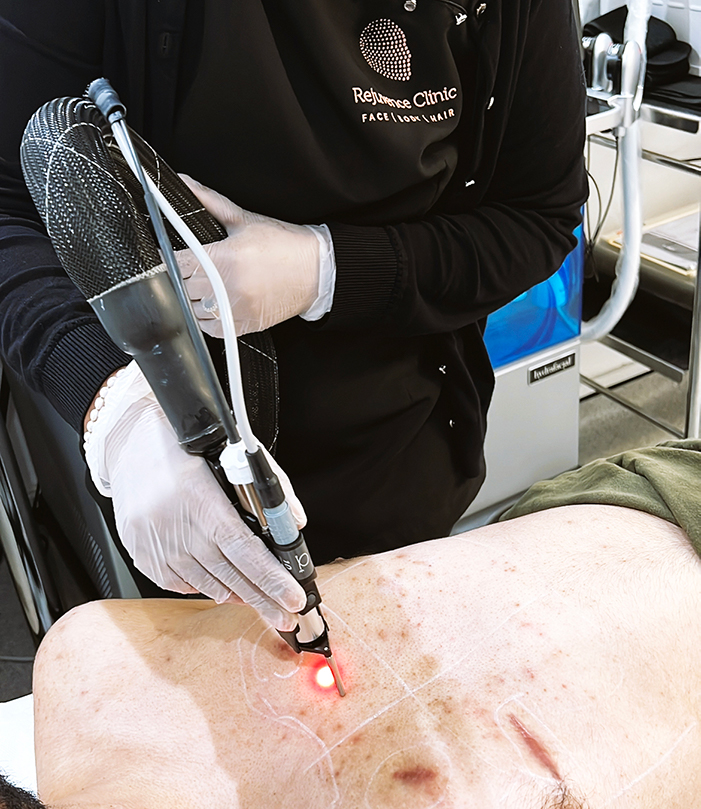
Hypertrophic scars are slightly different to keloids in that they are also raised large growths of excessive amounts of collagen but are restricted to the boundaries of a wound or cut. They do not grow beyond this whereas keloids do. On the whole they are much smaller and often slightly more responsive to treatments.
Unfortunately there is no cure for keloids and all treatments are limited in their success with a risk of recurrence. Typical treatments include intralesional injection of medication including steroids, muscle relaxing toxin and chemotherapy agents into the keloid scars, topical steroid creams and dressings, compression garments, silicone gel sheets, cryotherapy, cutting out of keloid scars and radiotherapy.
Recent research has shown that the best results for keloid and hypertrophic scars are achieved through a combination of treatments as opposed to relying on a single treatment. Recent published research has shown that intralesional scar injections with muscle relaxing toxins (the same medication used in wrinkle relaxing injections for the face) and certain specific chemotherapy agents (5-FU) can be combined with other treatment options to improve the results of keloid scar treatment. At Rejuvence we especially use muscle relaxing toxin injections prior to and after surgical excisions of certain types of keloid scars. We have found that this can significantly reduce any rates of recurrence and we especially use this for the treatment of keloids on the scalp and back of the head – Acne Keloidalis Nuchae.
Often, many patients would prefer for their keloid scars to be completely removed through excision (cutting out). This can be performed depending on where the keloids are and is normally carried out under local anaesthetic. However, it is very important to bear in mind that there can be a high rate of recurrence and sometimes the keloids can come back more aggressively. Once excised, immediate repeated treatments with steroid injections can help to reduce the risk of recurrence and some large specialist units advocate using radiotherapy in the postoperative period to further reduce the risk of keloids coming back.
Surgery for keloids specifically on the ear, in combination with steroid injections and the regular use of a compression earring can help reduce the recurrence rate significantly. At Rejuvence we have managed to achieve excellent results with low rates of recurrence through this approach.
Cryotherapy for the removal of keloid scars is a well established treatment option. Cryotherapy can be intralesional and surface cryo. Intralesional cryotherapy involves freezing the keloid from the inside by injecting a probe into the keloid and treating it with liquid nitrogen. This results in the scar shrinking. Surface cryotherapy consists of freezing the keloid on it’s surface. Studies have shown, however, that final outcomes with traditional excision and steroid therapy are still better than cryotherapy. At Rejuvence Clinic we recommend excision over cryotherapy. However, there are instances where cryotherapy is more appropriate. At Rejuvence we have the experience to judge which techniques are likely to give the best results.
Following complete excision of a keloid you will still be left with a scar. Keloids are always the result of a cut to the skin that has not healed normally. By excising the keloid we are giving it a second chance to heal naturally. Often following keloid excision you will be left with a scar that is slightly longer, but thinner and flatter with a much improved overall appearance. We can never make it disappear. It is then up to you to ensure you look after it well using a combination of steroid injections, compression and silicone gel massage and sheets.
Compression garments are often useful alongside silicone gel sheets but more so as a preventative measure rather than a sole treatment for established keloid scars. They are often used after the keloids have been surgically removed in an attempt to prevent them from coming back. Sustained physical pressure over the scar helps to prevent the build up of collagen above the scar and hence reduces the risk of a keloid reforming. At Rejuvence Clinic we recommend using compression garments where possible to prevent recurrence of the keloid. We can provide compression garments at an additional cost.
Silicone gel is often recommended for use after any surgical procedure to improve the appearance of scars. Regular massage of scars, once they have completely healed, helps to organise the skin cells and keep them flat and in line. Silicone gel sheets are also extremely helpful for the improvement of the appearance of scars. We always recommend using silicone gel and silicone strips after keloid surgery.













